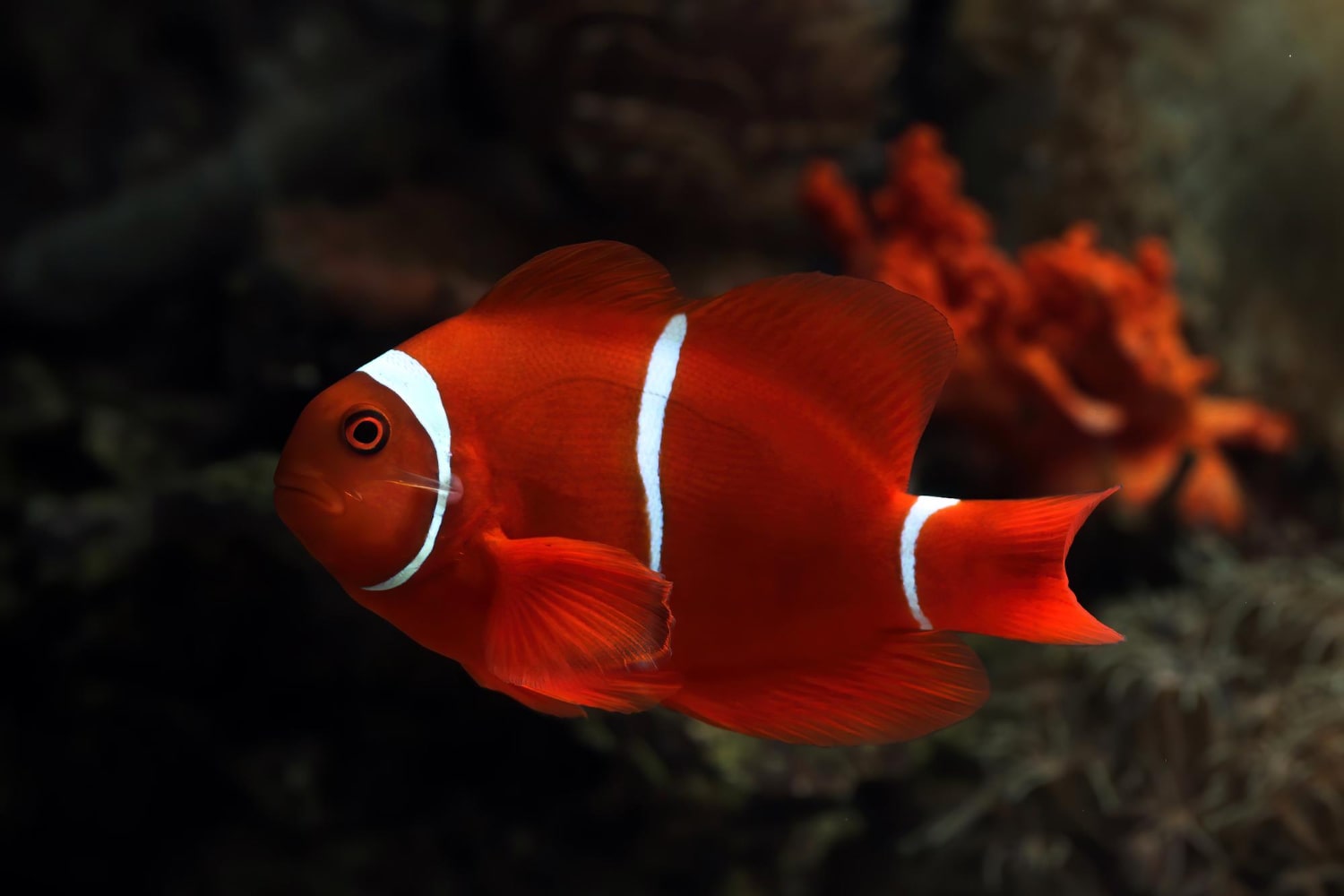Clownfish captivate attention with their bright colors, unusual behavior, and unique way of life. Often referred to as the “smile of coral reefs,” they tirelessly dart among sea anemones, forming an extraordinary symbiotic relationship with them. Many people know these fish from a popular animated film, but outside the screen, they possess numerous real-life traits you may not know. This collection of fascinating and surprising facts about clownfish will intrigue even the most seasoned marine life enthusiasts.
- Clownfish live in symbiosis with sea anemones thanks to a special mucus on their skin that protects them from the stinging tentacles. Without this mucus, the fish would get burned much like being stung by a jellyfish. They not only use the anemones as shelter but also clean them of parasites and chase away predators.
- All clownfish are born male, but they can change their sex when necessary. If the dominant female in a group dies, the largest male transforms into a female to ensure reproduction continues. This change is irreversible and occurs only once in the fish’s lifetime.
- There are about thirty known species of clownfish, all living in the warm waters of the Pacific and Indian Oceans. They are commonly found at depths of up to 12 meters among coral reefs, where they reside within sea anemones. Each species has distinct features in its coloration and size.
- Clownfish are extremely territorial and rarely leave the area of their anemone. They fiercely defend their home from other fish and even large predators. In the face of danger, they don’t flee but show aggressive behavior to scare off the threat.
- Their bright orange bodies with white stripes serve more than a decorative purpose. This coloration acts as a signal that helps group members recognize each other. It also warns potential predators that the fish may be poisonous or dangerous.
- Clownfish feed on plankton, tiny crustaceans, algae, and leftovers from the anemone. They also consume parasites and dead tissue from the anemone, helping to keep it healthy. Their diet depends on their species, habitat, and availability of food.
- The female lays up to a thousand eggs on a hard surface near the anemone, and the male takes care of them. He fans the eggs with his fins to provide oxygen and cleans them from debris. After 6 to 10 days, the larvae hatch and float in the water before settling on the seabed.
- Despite their popularity in aquariums, clownfish require very specific care conditions. They need a sea anemone partner, stable water temperature, and low nitrate levels. Without proper care, they quickly fall ill and may die.
- These fish have a developed communication system that includes clicking, jaw sounds, and body movements. They use these signals to coordinate behavior within the group, warn of danger, or display dominance. Communication is also crucial during the care of offspring.
- Clownfish live about 6 to 10 years in the wild, but with proper care in an aquarium, they can live up to 15 years. Their health is highly dependent on water quality, a stable diet, and low stress levels. Often, it is human error that shortens their lifespan.
- Most marine predators avoid clownfish due to the protection of the anemone, but larger predators that are not affected by the anemone’s sting can still eat them. Habitat destruction and ocean pollution are also reducing the number of anemones and, in turn, clownfish populations. Additionally, they are frequently caught for the aquarium trade.
- Some clownfish species have white stripes that are not straight but zigzagged or shaped like lightning bolts. This helps differentiate between species, even within the same genus. Rare variants with unique patterns are especially prized by collectors.
- Even though clownfish became famous through animated movies, they have no connection to human emotions. Their behavior is entirely driven by instincts and biological processes. They do not feel “happy” or “sad” as humans do, even if their appearance may seem expressive.
- Clownfish live in communities with a strict hierarchy, where only the largest and oldest individuals reproduce. The rest occupy specific positions within the social structure and do not attempt to breed until the group’s composition changes. This structure maintains stability and reduces conflict.
- At night, clownfish hide inside sea anemones, becoming less active and avoiding danger. They rarely leave their shelter and even during migrations stay close to home. Their dependence on a single location makes them very sensitive to environmental changes.
These amazing facts about clownfish reveal the complexity of these small ocean dwellers that many know only as animated characters. In reality, they are fascinating creatures with remarkable biology, special adaptations, and social organization. Their existence is tightly linked to the fragile balance of coral reef ecosystems, so environmental protection is crucial for their survival. Perhaps these interesting facts will inspire someone to explore the marine world more deeply.





